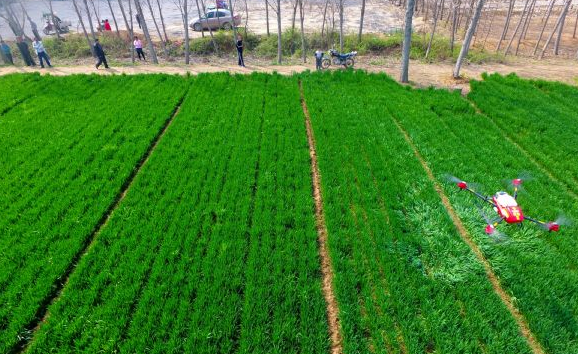Many people's stereotypes about artificial intelligence (AI) are mostly similar to voice assistants reminding users of their daily life journey. In fact, the real power of AI and machine learning lies in how to make the professional technology and knowledge more "democratized" and lower the basic thresholds for tasks that were once limited to a small number of experts. For example, there are many Agricultural areas of climate, geography and anthropogenic variables. It has been reported that by using machine learning algorithms to absorb large amounts of data, identify patterns, and apply statistical probabilities, AI can choose the direction and process of action that is most likely to lead to successful outcomes.
Nevertheless, if machine learning is to be applied to the field of agricultural survival, the overall process is bound to have a considerable degree of complexity. For example, no matter how calm a field is, observers can easily notice that the farm itself is mixed with many different variables and conditions. The results of the same seeds planted in different regions are not all the same, or even far apart. Even in the same connected land, the overall farming conditions of one end of the field may be different from other parts.

Therefore, for farmers, the results of planting are hard to be effectively predicted until the final harvest day. This is mainly due to the intertwined results of thousands of interrelated variable factors, such as the proportion of nutrients contained in the soil, changes in soil quality, sunny or cloudy weather changes, and rainfall. Volume, temperature, insect infestation, crop disease, and many other variables.
However, this is where machine learning can show the clarity of the confusion. For example, remote sensors placed in the field can receive environmental conditions and convert them into statistical data, which is then processed by an algorithm to adapt and learn to predict a series of results. Farmers can also use these AI techniques to make better field decisions, which in turn helps increase the chances of successful farming.
Farm productivity has always depended on the experience of growers; if this can be changed, it can create major shifts in the agricultural sector, and even provide novice farmers with the best farming decisions and grow their cultivation techniques. More importantly, this shift is especially beneficial for developing countries without rich farming experience.
The rise of precision agriculture has opened the door to a broad dissemination of machine expertise. Remote sensors, satellites and unmanned aerial vehicles (UAVs) collect information and data throughout the entire farm to monitor crop health, soil conditions, temperature and humidity, and interpret these data in an efficient manner to make crops The harvest is getting more and more stable, while reducing waste and reducing costs, and ultimately returning benefits to consumers.
Machine learning algorithms can also be used in breeding processes that are resistant to drought or insects. The use of AI technology in breeding will help to breed varieties with better appearance, longer shelf life, better taste, and stronger health, which will boost overall production.
China Smd Pin Header,Other Female Pin Header manufacturers, welcome Row Pin Female Header,Pitch Female Pin Header purchasers from worldwide to visit our site.
China Smd Pin Header,Other Female Pin Header manufacturers, welcome Row Pin Female Header,Pitch Female Pin Header purchasers from worldwide to visit our site.
Smd Pin Header,Other Female Pin Header,Row Pin Female Header,Pitch Female Pin Header
ShenZhen Antenk Electronics Co,Ltd , https://www.antenk.com
